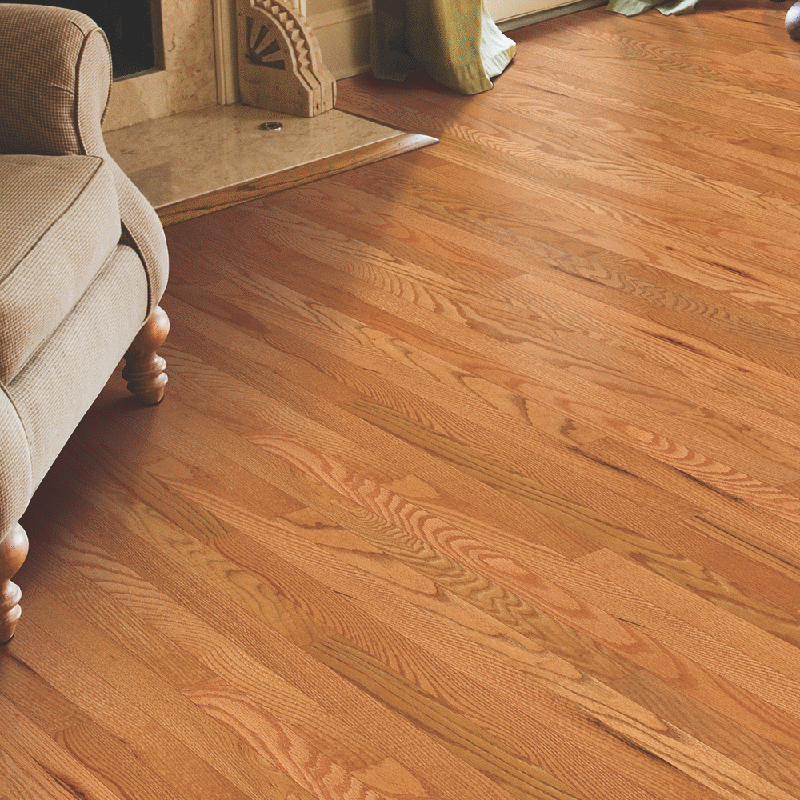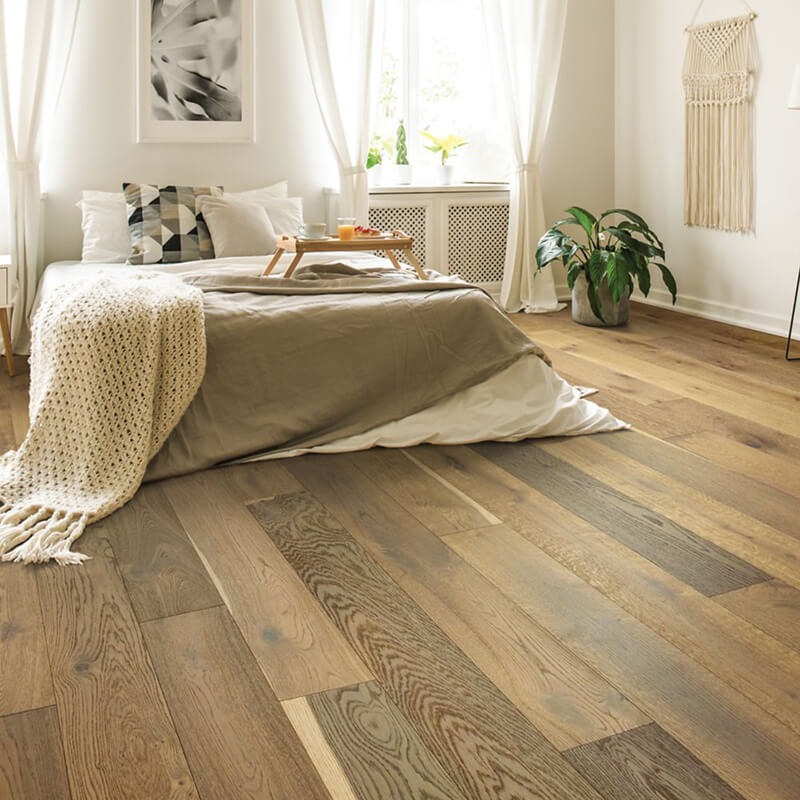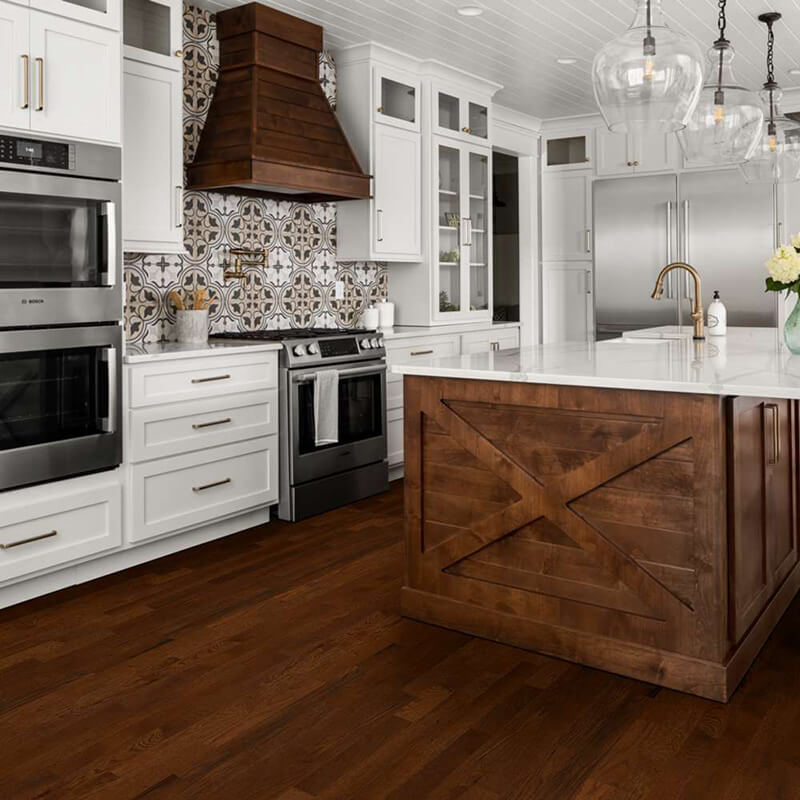Hardwood
Hardwood
When you purchase hardwood floors from Express Flooring Creations (EFC), you can be assured you are getting a top quality product at the most competitive price. EFC offers you an unmatched selection of styles, with the most up to date designs. We provide the best customer service available and professional, courteous installation to protect your investment.
In addition to adding warmth and beauty to a room, hardwood floors are also a great way to increase the value of your home. There are many different styles of hardwood flooring to choose from, including domestic and exotic species, bamboo and cork. You can buy prefinished hardwood floors that are already stained and finished with a coating that is stronger than most site-applied finishes. Express Flooring Creations makes it easy to get the floor that’s right for both you and your home.
Hardwood floors can be installed on any level of your home and are available in multiple constructions to allow for installation flexibility over different sub-floors and to mitigate moisture. Identify your sub-floor and level of your home to determine what construction of hardwood to select.
It’s important to take moisture into consideration when you’re selecting hardwood floors since changes in moisture can create issues such as warping and gaping To mitigate the effects of moisture, keep moisture levels within manufacturer recommendations and choose the right construction of hardwood flooring. It is not recommended that you install hardwood flooring in full baths to do fluctuating moisture conditions.
There are three primary sub-floors over which hardwood flooring can be applied:
- Basement or concrete below ground level
- Concrete at ground level
- Plywood sub-floor at or above ground level
There are four constructions of hardwood floors to address each primary type of sub-floor.
- 3/4-in. Solid – This is a 3/4-in. thick solid piece of hardwood. Because solid floors expand more when exposed to moisture than engineered floors, you can only install them over a plywood sub-floor at or above ground level.
- 5/16-in. Solid – A thinner version of the 3/4-in. hardwood floor. Since it’s solid, you cannot apply it on concrete below ground level, yet it’s thin enough to glue down to concrete at ground level or install over plywood at or above ground level. *Most solid floors can be sanded and refinished. Check manufacturer’s warranty.
- Engineered – Engineered floors are as much of a hardwood floor as a 3/4-in. solid floor. In fact, engineered floors were designed for installation over concrete and to help mitigate potential moisture issues. The cross-layer construction prevents the floor from expanding as much as a 3/4-in. or 5/16-in. solid floor when exposed to moisture. Therefore, you can install engineered anywhere in the home, including the basement. Engineered floors are also more environmentally friendly and less expensive than solid floors because the veneer is only a few millimeters thick instead of 3/4-in. thick. The real hardwood veneer of engineered floors differs from laminate, which has a printed paper veneer. *Some engineered floors can also be sanded and refinished. Check manufacturer’s warranty.
- Locking – A locking, or floating, floor is an engineered floor, but with the added advantage of a locking tongue and groove system. All locking floors require an underlayment barrier to insure protection against wear and sound absorption. *Some locking floors can be sanded and refinished.
Hardwood Flooring Types
Hardness and Species of Hardwood floors are available in a wide selection that can match anyone’s style. When considering a hardwood floor that is right for you, consider the following factors:
- Janka Hardness Rating – The relative hardness of wood species is measured using the Janka Hardness Rating. This test measure the force needed to embed a steel ball (.444 inch in diameter) to half its diameter in the piece of 3/4-in. solid wood being tested. The higher the number, the harder the wood. This means the wood is more resistant to indentations.
- Species – There are domestic species like Oak, Maple, and Cherry as well as exotic species like Bamboo, Brazilian Cherry, and Cork. Each species has a distinct grain pattern. For example, Oak has a very distinguished grain whereas Maple is very subtle. Exotics are very popular because of their distinct grain patterns and color.Different species also have varying degrees of hardness. Hardwood floors are a natural product and are susceptible to dents (not covered under manufacturer warranties unless specifically stated). If you expect your floors will take a lot of abuse, consider a species at least as hard as red oak based on the hardness chart to the right.
Janka Rating Test
Wood Species Hardness Rating
Ipe, Brazilian Walnut, Lapacho – 3,684
Cumaru, Brazilian Teak – 3,540
Brazilian Cherry, Jatoba – 2,350
Santos Mahogany, Cabreuva – 2,220
Amendiom – 1,912
Tigerwood – 1,850
Hickory/Pecan – 1,820
Acacia – 1,750
Kempas – 1,710
Timborana – 1,570
Sapele – 1,510
Maple, hard – 1,450
Bamboo, natural – 1,380
Australian Cypress – 1,375
Oak, white – 1,360
Ash, white – 1,320
Beech, American – 1,300
Oak, red – 1,290
Birch, yellow – 1,260
Walnut, black – 1,010
Cherry, black – 950
Cedar – 900
Pine, southern yellow – 690
Color
Most domestic species of wood come in a variety of colors. Most exotic species, on the other hand, are not stained because their natural color is very popular. Many exotic species are photosensitive and need exposure to sunlight to achieve their desired rich color.
Width
Wider floors over 3 inches are gaining popularity. Widths can easily change the look of a floor since the wider the plank, the fewer the seams that can be seen in the floor. Wider widths also showcase the natural beauty of the wood, especially Hickory and Tigerwood.
Texture
There are many types of texture to choose from, including smooth, hand-scraped, distressed, and wire-brushed.
 Hardwood Example – Living Area
Hardwood Example – Living Area  Hardwood Example – Bedroom
Hardwood Example – Bedroom  Hardwood Example – Kitchen
Hardwood Example – Kitchen
